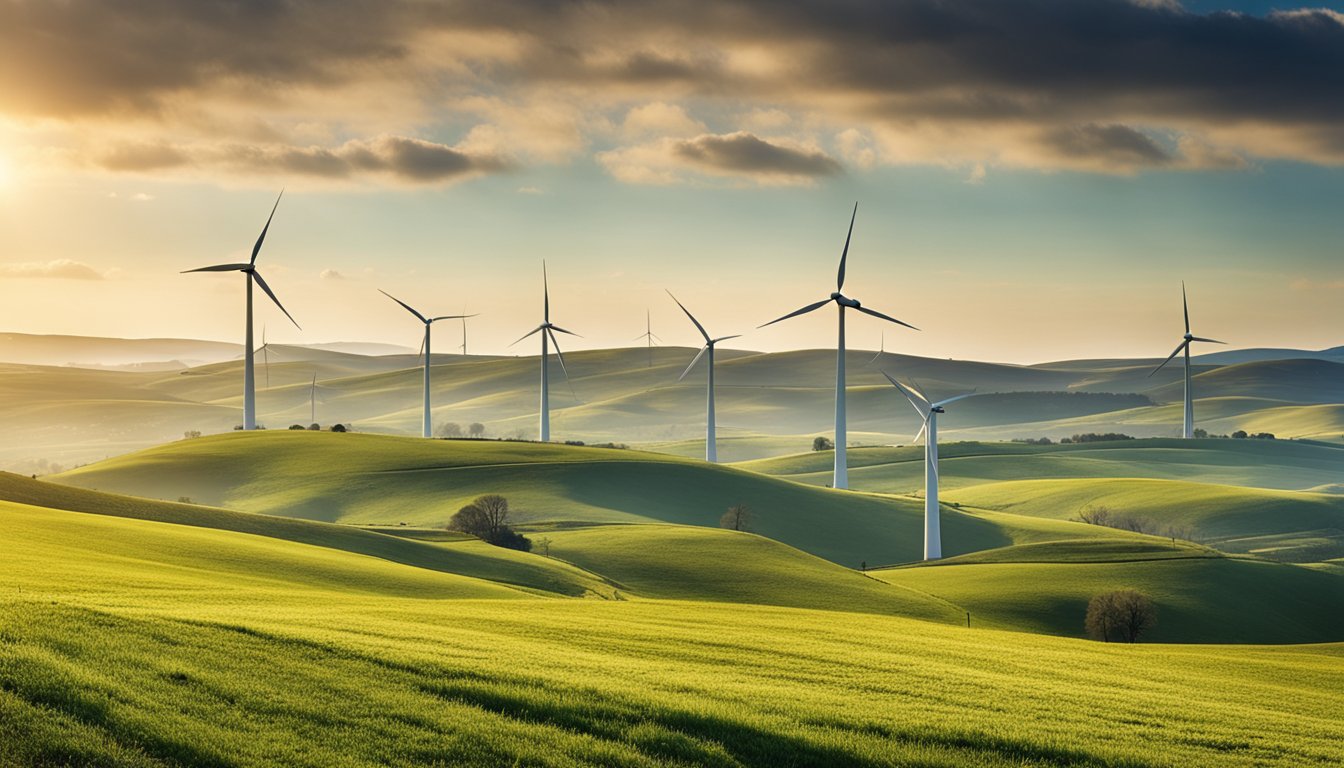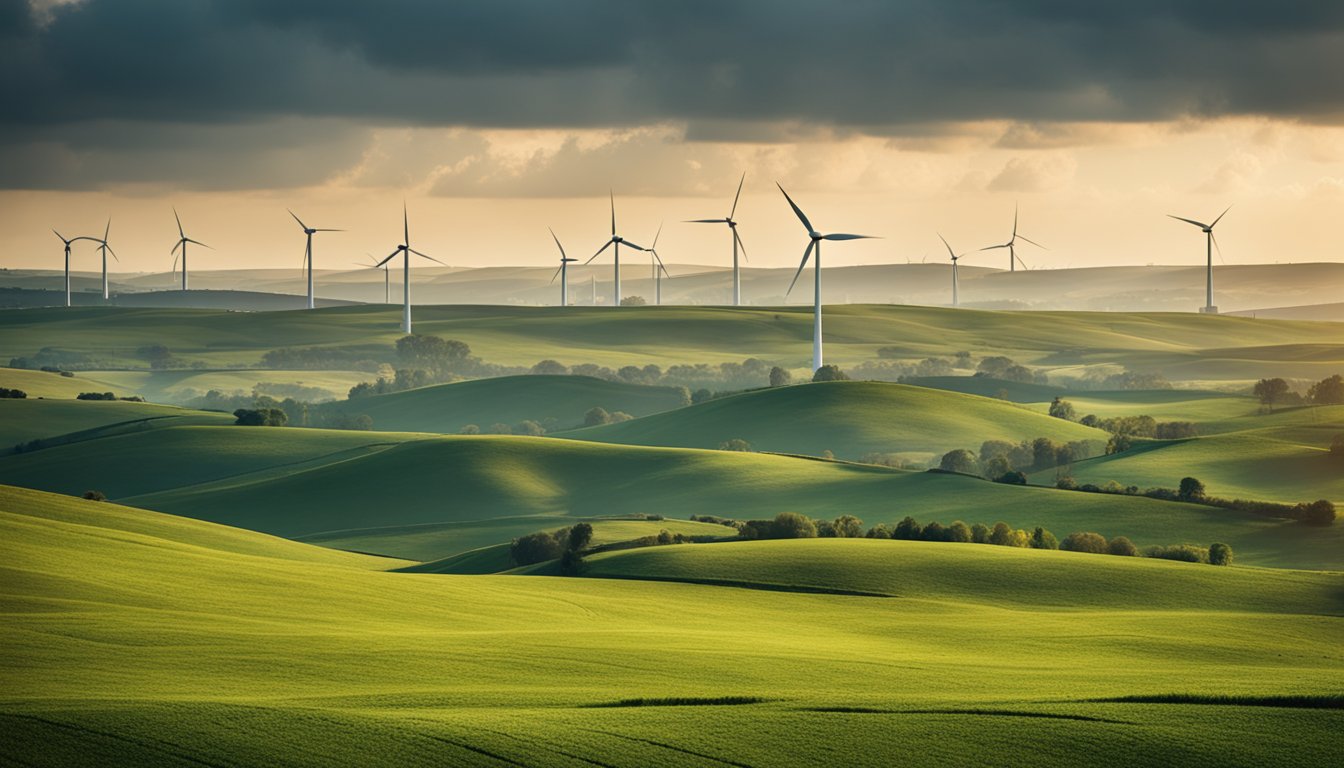Late updated: 26 Sep 2024 13:09
Written by: Eleanor Hartman
The Benefits of Community Wind Farms in the UK: Enhancing Sustainability and Local Economy
In recent years, community wind farms across the UK have garnered significant attention. These initiatives not only promote renewable energy sources, but they also deliver direct benefits to local communities. Community-owned wind projects can reduce energy costs and lower carbon emissions, making them an attractive solution for sustainable living.

The economic advantages of community wind farms extend beyond mere savings on energy bills. They can provide a steady stream of income to local stakeholders, which supports community projects and initiatives. Moreover, community engagement in these projects fosters a sense of ownership and strengthens communal ties.
Finally, wind farms contribute to the UK's broader environmental goals. By reducing reliance on fossil fuels, they help combat climate change and ensure a cleaner energy future. Furthermore, these projects can encourage educational opportunities and awareness within local communities, highlighting the importance of renewable energy for a sustainable future.
Key Takeaways
- Community wind farms lower energy costs and carbon emissions.
- They offer economic benefits and foster stronger community bonds.
- They support environmental goals and promote renewable awareness.
Community and Economic Advantages
Community wind farms in the UK present several opportunities for local communities, from enhancing economic resilience and energy security to generating funds for community projects and boosting local employment.
Strengthening Local Economy and Energy Security
Wind farms bolster local economies by ensuring self-reliant energy production. They reduce dependence on national grids, contributing to greater energy security. Community ownership allows local residents to retain profits within their own municipalities, which can then be reinvested into other local projects.
By generating their own renewable energy, communities can manage their energy costs more effectively. This self-sufficiency not only guards against fluctuating energy prices but also enhances local resilience. Engaging with companies like Ripple Energy and Octopus Energy offers further opportunities for local energy partnerships, diversifying the local energy landscape.
Community Benefit Funds and Ownership
Community benefit funds are established as part of wind farm projects to support local development. These funds can be used to finance a wide range of community initiatives, from educational programmes to infrastructure development.
Ownership options vary, including full community ownership or partnerships with commercial entities. The profits generated by community-owned stakes are typically invested back into facilities benefiting residents, such as sports centres or schools. Engaging communities in ownership also leads to a greater stake in the local area’s prosperity, fostering a sense of investment in regional development.
Promotion of Local Employment and Infrastructure
Wind farm projects often spur job creation during both the construction and operational phases. This influx of jobs can significantly boost the local economy. Roles range from specialised positions in the energy sector to broader roles in logistics and maintenance.
Additionally, wind farm projects generally lead to infrastructure improvements, such as road upgrades, which benefit the wider community. Collaborating with local authorities ensures that these developments align with community needs. Moreover, the increased economic activity from such projects usually results in enhanced local services, providing tangible benefits for the population at large.
Environmental and Energy Implications

Community wind farms in the UK offer notable environmental benefits, ranging from reducing carbon emissions to enhancing energy independence. These positive effects are integral to achieving sustainable development goals and gaining public support.
Contribution to Net Zero Targets and Carbon Emission Reduction
By harnessing wind energy, we actively combat climate change. Community wind farms significantly reduce reliance on fossil fuels, thereby decreasing carbon emissions. The UK’s commitment to achieving net zero carbon emissions hinges on expanding renewable energy sources. Wind power plays a crucial role in this transition by providing a clean energy alternative. Every wind turbine contributes to a greener planet by displacing carbon-intensive energy sources. This shift highlights the importance of local wind farms in progressing towards national climate objectives and in mitigating the adverse effects of climate change.
Energy Independence Through Local Renewable Sources
Local wind farms help alleviate the UK's dependency on external energy supplies. By generating energy through wind power, we support energy independence and security. This independence offers protection against volatile energy prices and external supply disruptions. Community-based projects also promote local economic development. They engage local businesses in the energy sector, fostering regional expertise and innovation in renewable energy technologies. Through onshore wind projects, regions can address their energy needs sustainably, reducing energy bills for local residents alongside reducing carbon footprints.
Public Engagement and Support for Sustainable Energy Projects
Public engagement is vital for the success of wind energy initiatives. Local residents often show stronger support when projects actively involve the community. This engagement ensures that developments address community concerns and deliver tangible benefits such as job creation and educational opportunities. It enables shared ownership models, offering residents a stake in the projects. Involving the public in the planning and benefits of these projects fosters trust and increases acceptance. This collaborative dynamic ultimately strengthens the implementation of sustainable energy projects, aligning with both the Welsh and Scottish Governments' renewable energy development goals.
Frequently Asked Questions

Wind farms, especially when community-owned, offer various benefits and challenges. We explore their impact on local economies, environmental advantages and drawbacks, and how they align with the UK's energy objectives.
How do wind turbines impact local economies in the United Kingdom?
Community wind farms can bolster local economies. They provide jobs during construction and maintenance, stimulating local businesses. Local ownership allows communities to reinvest profits in services, infrastructure, and other community projects.
What are the environmental advantages of utilising wind energy within UK communities?
Wind energy produces no greenhouse gas emissions during operation. This reduces reliance on fossil fuels and lowers the carbon footprint, aiding climate change mitigation. Wind farms also preserve natural resources, as wind is abundant and renewable.
What potential negative effects does wind energy have on the environment?
Despite their benefits, wind farms can impact local wildlife. Bird and bat populations may be affected by turbine operations. Habitats might be disrupted during construction, though many developers take steps to minimise these impacts.
How does the Community Benefits Protocol for Onshore Wind in England support local areas?
The Community Benefits Protocol outlines how developers should engage with communities. It ensures that local areas receive fair and tangible benefits, such as financial contributions, infrastructure improvements, or educational support.
What are the disadvantages associated with the deployment of wind farms?
Wind farms can alter landscapes and views, which may concern residents. Noise from turbines and shadow flicker can also be issues. However, placement and technology improvements aim to mitigate these effects.
In what ways do community wind farm projects contribute to the UK's energy goals?
These projects align with the UK's renewable energy targets by increasing the share of green energy. They promote energy independence and help decarbonise the energy grid. Engaging communities aids public acceptance and long-term sustainability.